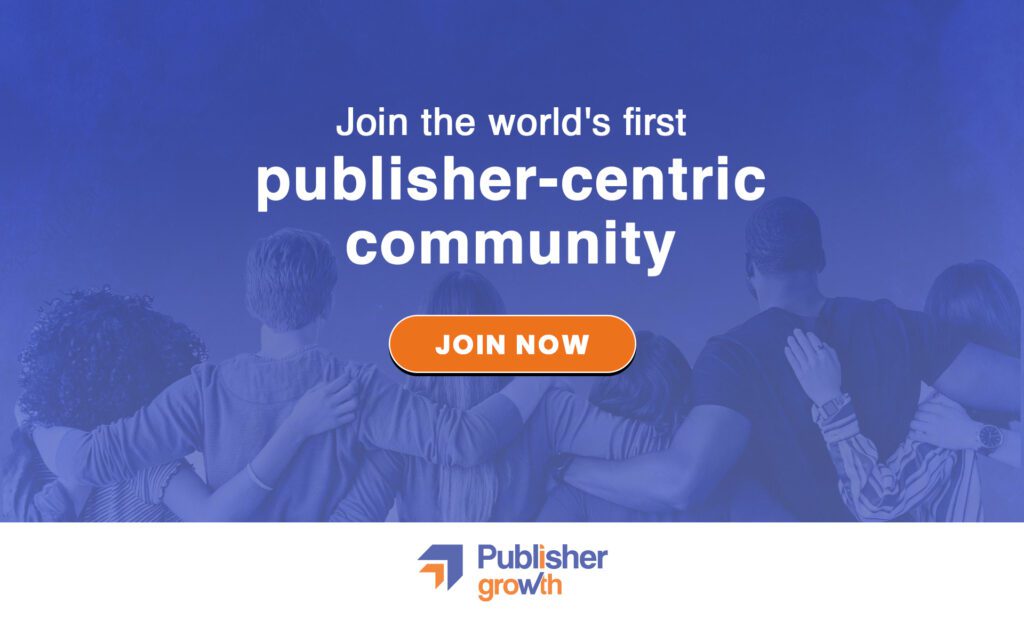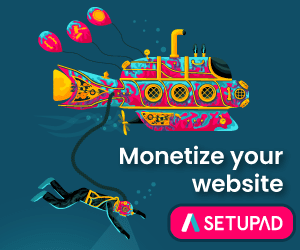Last updated on July 20th, 2022 at 08:14 am
DoubleClick for Publishers(DFP) is a third-party ad serving platform that manages and optimizes the ad space of publishers in order to increase sales margin and effectively maximize revenues. This Google-owned ad server has a long list of impressive features and provides efficient services, making it the most sought-after ad server in the world. The biggest edge that DFP has over other ad servers is that it can be easily integrated with AdSense, the ad network from Google with perhaps the largest global publisher base. The server is free for publishers who serve less than 90 million monthly impressions. Its user-friendly interface, sophisticated targeting tools, adaptable reporting tools, and first-rate support team make it one of a kind and highly coveted.
Publishergrowth: The Revenue Acceleration Platform for Publishers
Blognife is elated to announce the launch of Publisher Growth- a community of publishers that helps you actively accelerate your revenue. This platform assists publishers in growing their traffic and revenue. As publishers, you can share and read reviews of ad networks and hosting companies. You can connect with other publishers to build links for growth and monetization hacks and more. This platform will help you stay up to date with the advertising and publisher ecosystem.

Features:
We understand that beginners may find it a little difficult to wrap their heads around the countless properties of DFP. This is why we, at Blognife, seek to make the process of understanding DFP a tad bit easier for new publishers by explaining some key features in our blog. In this article, we will discuss a very important part of online advertising- a line item.
What is a Line Item in DFP?
Generally said, a line item in online advertising is a unit of advertising that a publisher sells to an advertiser. This unit contains all the specifics of the sale.
In DFP, a publisher has to add the names of the advertisers from which it is running multiple ads. For each of these advertisers, it has to create an order which is basically a folder containing line items. A line item defines an advertiser’s agreement with the publisher to buy the specific number of impressions ( for CPM), clicks ( for CPC) or time ( for CPD) during a certain time at a certain price. Each line item also includes details with respect to the positioning of the advertiser’s ad and, optionally, the time of the week at which it will get showcased and also to whom it will be displayed.
The benefits of using line items
Each line item in DFP has a type. We will discuss those types in a while. Now each type has a default priority value. Thus all line items have priority values of their own. Line item types and priority values regulate the how the line items will be organized for ad selection. The type and priority of a line item determine how DFP will organize the competition between all the other line items for each ad impression.
For example, if a line item of priority 4 competes with a line item of priority 12 for an ad impression, DFP prioritizes the line item of priority 4 over the one of priority 12. So the rule is that lower the number, higher the priority.
Line Item Types in DFP
There are 7 different line item types that we will discuss here.
(1) Sponsorship
This is the line item type with the highest delivery priority. They are delivered the fastest and outweighs all other line items. These types are guaranteed inventory, meaning these line items will fill the percentage of ad unit the advertiser bought and they will supersede all other ads of lower priority until that percentage is met. These are sold at a premium price and use Cost Per Day (CPD) pricing model.
Priority Level: 4
(2) Standard
This is the default line item type in DFP. These are also guaranteed inventory, but are sold by a specific volume of impressions and not by percentage of ad unit. Standard line items are mostly used for directly-sold ad campaigns. These types generally fill an ad unit for a specific time period. The standard priority type can be set to three options- high, normal and low. If a standard line item competes with another standard line item, then the line item at high will overrule the other one set at normal or low.
Standard- high -> Priority Level: 6
Standard- normal -> Priority Level: 8
Standard- low ->Priority Level: 10
(3) Network
These line item types fill a percentage of the remaining ad impressions after the guaranteed line items(sponsorship and standard) fulfilled their delivery goals. These can also work simultaneously with the guaranteed ones. So network is a non-guaranteed or remnant line item type. These line items do not have specific start and end dates and are best suited for ad networks that do not have an impression goal.
Priority Level: 12
(4) Bulk
Bulk is another non-guaranteed or remnant line item type that works on a fixed quantity of impressions. That means bulk line items follow the CPM pricing model. These line items have no constraints with respect to time. They are best suited for the ad networks that provide an impression cap that is the maximum number of impressions to be filled.
Priority Level: 12
(5) Price Priority
This kind of line item competes with other line items on the same level with respect to price. The highest-paying line item wins the impression. These line item types are used to fill a site’s unsold ad inventory using the highest-paying line item. This is also a non-guaranteed or remnant type that can generate the highest revenue for unsold inventory. Price Priority line items can have an optional daily or lifetime delivery cap; for example, 500 impressions per day for a year or 5000 impressions over a 6-month period.
Priority Level: 12
(6) AdExchange/AdSense
The AdExchange line items appear only when a DFP publisher has linked its AdSense/AdExchange account with its DFP account. These line items compete with other line item types of the same level on an impression-by-impression(CPM) basis. DFP chooses the line items that fit the criteria and then calls AdExchange to look for ads that fit the same criteria. If AdExchange manages to find one that also happens to have a higher CPM, that AdExchange line item will serve. This is the line item type that enables Dynamic Allocation.
Priority Level: 12
(7) House
This is the line item type with the lowest priority and is typically used when a publisher wants to promote its own products/services or those endorsed by it. These normally do not generate any revenue and are delivered only if no paying line item type is available.
Priority Level: 16
Special Mention: Click Tracking
This is a no-priority line item that is used to track clicks on textual and image ads in a publisher’s own content. It mainly consists of hyperlinked text or images. The click tracker stops working after the publisher reaches the number of clicks set by it as the goal.
Our Recommended Tools for Publishers:
- Best AdSense Alternative- Setupad, Ezoic
- Push Notification Network- iZooto, Unative,
- Best Contextual Ad Network- Media.net (Extra 10% for 3 months)
- Native Ad Network- Mgid
- Popup Ad Network- Exoclick, Propeller Ads
- Best Web Hosting- Bluehost, Hostgator, Stablehost, WPEngine
- Blogging Tools- OptinMonster, Astra, Teachable,

I and my team research various ad networks and can help you increase your overall ad revenue; so you could rake in more greenbacks with the best monetization platforms. Tap into the power of the online publishing business with me. I am just a mail away, so reach out to me if you want to scale up your website revenue. mail: [email protected]


